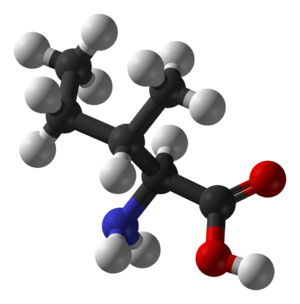Organic compound facts for kids
Organic compounds are special chemical substances that are mostly built around the element carbon. Think of carbon as the main building block. These compounds always have at least one carbon atom connected to another type of atom, usually hydrogen, oxygen, or nitrogen. Many common materials, like plastics and even the food we eat, are organic compounds.
Contents
History of Organic Compounds
The word "organic" for these compounds came from the 19th century. Back then, people thought that only living things, like plants and animals, could create organic compounds. They believed that non-living things, such as minerals, could only make inorganic compounds.
However, a scientist named Friedrich Wöhler proved this idea wrong. He showed that a compound found in urine, which comes from living things, was actually inorganic. This discovery helped scientists understand that organic compounds could be made in a lab, not just by living organisms.
Types of Organic Compounds
Organic compounds can be found in nature or made by people. We can describe their structure using special names and diagrams.
How We Show Molecules
One way to show a molecule is by drawing its structural formula. Because molecules can be very complex, scientists have developed simple ways to draw them. One common way is using line diagrams. In these diagrams, each atom is shown by a letter. Lines connect atoms that are bonded together. One line means a single bond, two lines mean a double bond, and so on.
Naming Organic Compounds
There are countless organic compounds, so we need a clear way to name each one. The International Union of Pure and Applied Chemistry (IUPAC) created a system for this. An IUPAC name is unique for every possible molecule. However, these names can be very long and complicated.
Because of this, people often use "trivial" names. These are unofficial but widely understood names. For example, the pain reliever you might know as Paracetamol or Tylenol has a very long IUPAC name: N-(4-hydroxyphenyl) acetamide. Some trivial names are also trademarks.
Natural Organic Compounds
Natural compounds are those made by plants or animals. While we can sometimes make these in a lab, it's often easier and cheaper to get them from nature.
Some common natural compounds include:
- Amino acids: These are the building blocks of proteins.
- Carbohydrates: These give us energy, like sugars and starches.
- Many antibiotics: Medicines like Penicillin and Amoxicillin are natural compounds.
Synthetic Organic Compounds
Synthetic compounds are made by people in labs or factories. Sometimes, scientists take a natural substance and change its molecule slightly. For example, glycerin can be made from vegetable oils.
Other synthetic compounds are created through many complex steps. Plastics are a good example. Some plastics are made mostly from natural materials, while others are entirely manufactured.
Finding the Structure of Compounds
When a new compound is found in nature, scientists might know it exists and what it does. But they might not know exactly what atoms it's made of or how they are arranged. Scientists use special tools and methods to figure out a compound's exact structure:
- Mass spectrometry: This method helps find the mass of a molecule and its parts.
- X-ray diffraction: This technique uses X-rays to see the arrangement of atoms in a crystal.
- Nuclear magnetic resonance spectroscopy: This helps identify different types of atoms and how they are connected.
- Infrared spectroscopy: This method looks at how molecules absorb light to identify their chemical bonds.
Related pages
See also
 In Spanish: Compuesto orgánico para niños
In Spanish: Compuesto orgánico para niños



